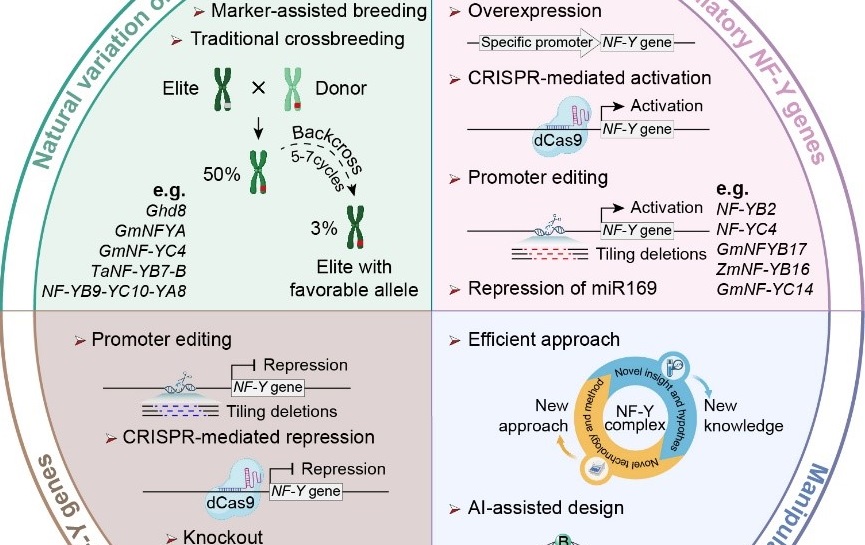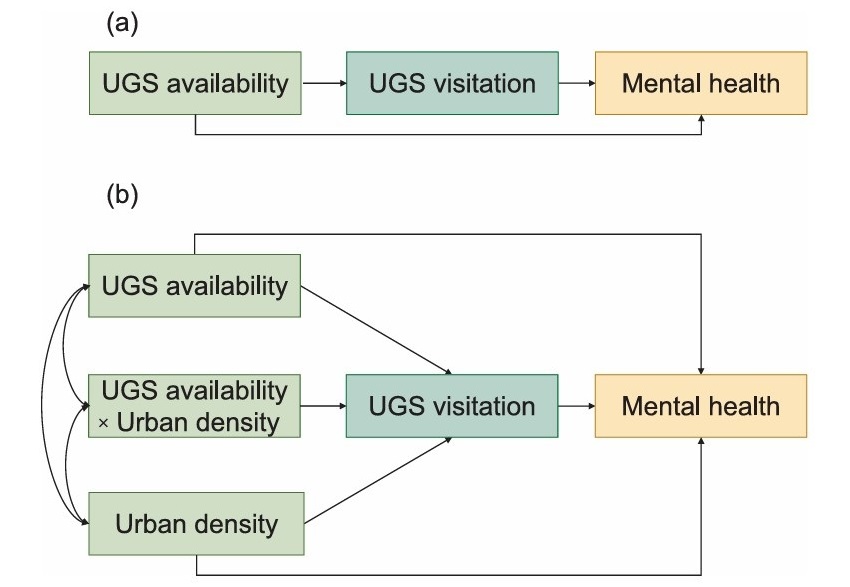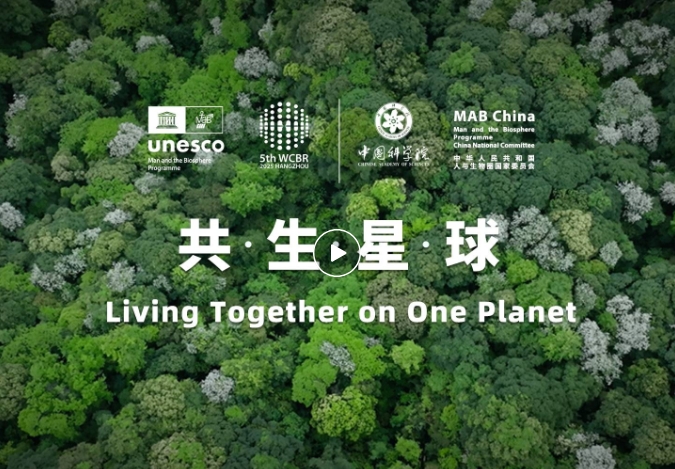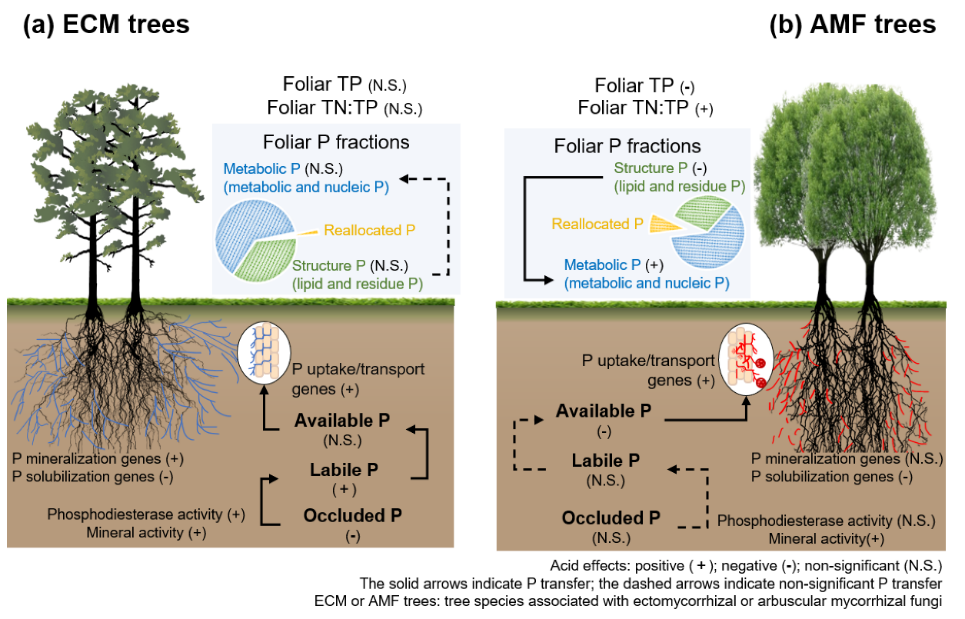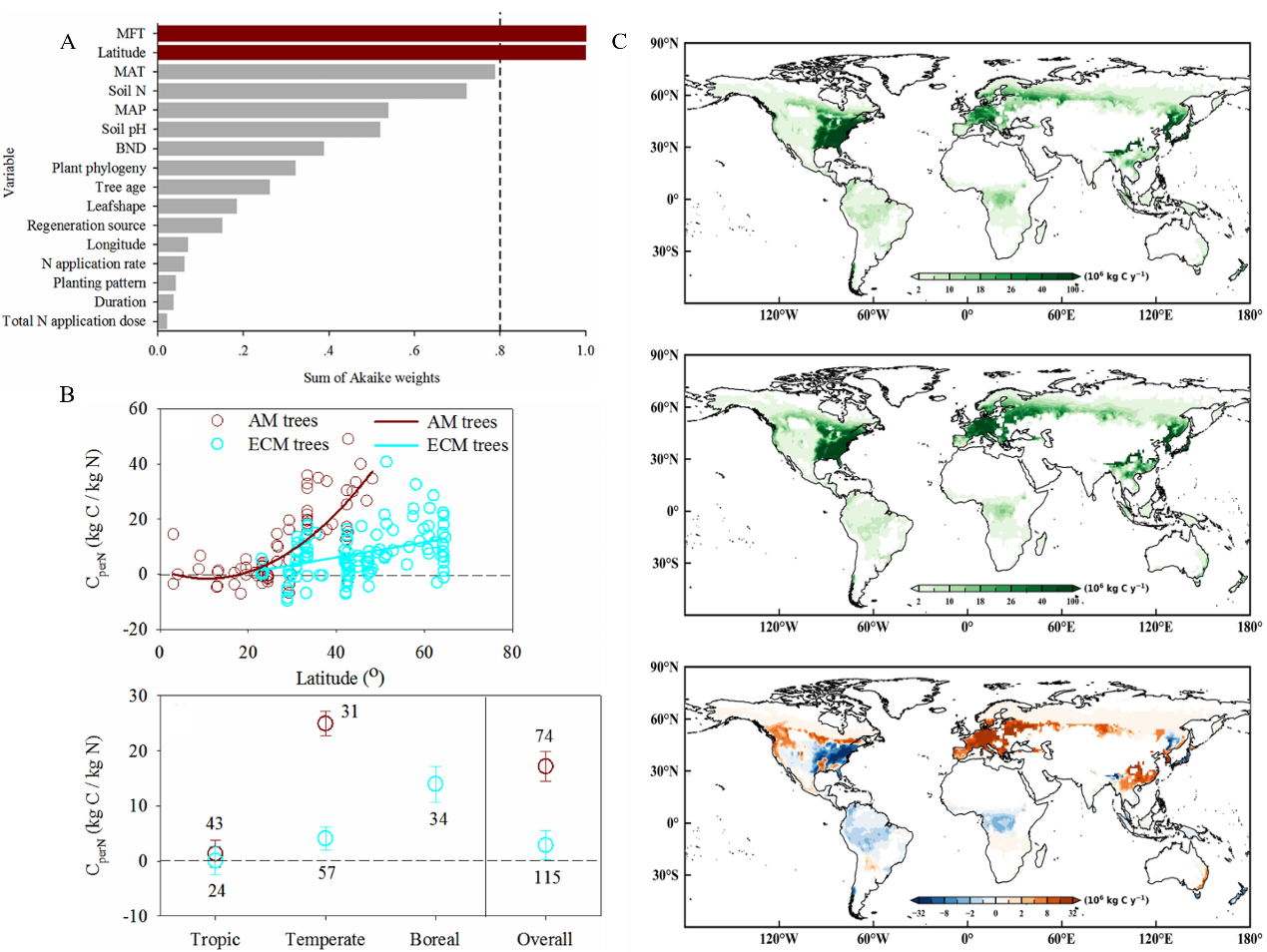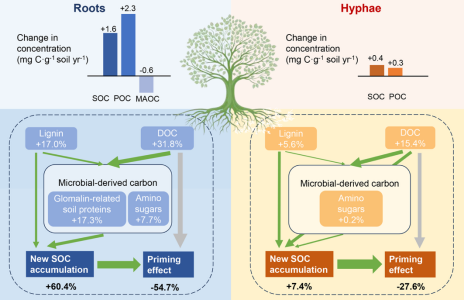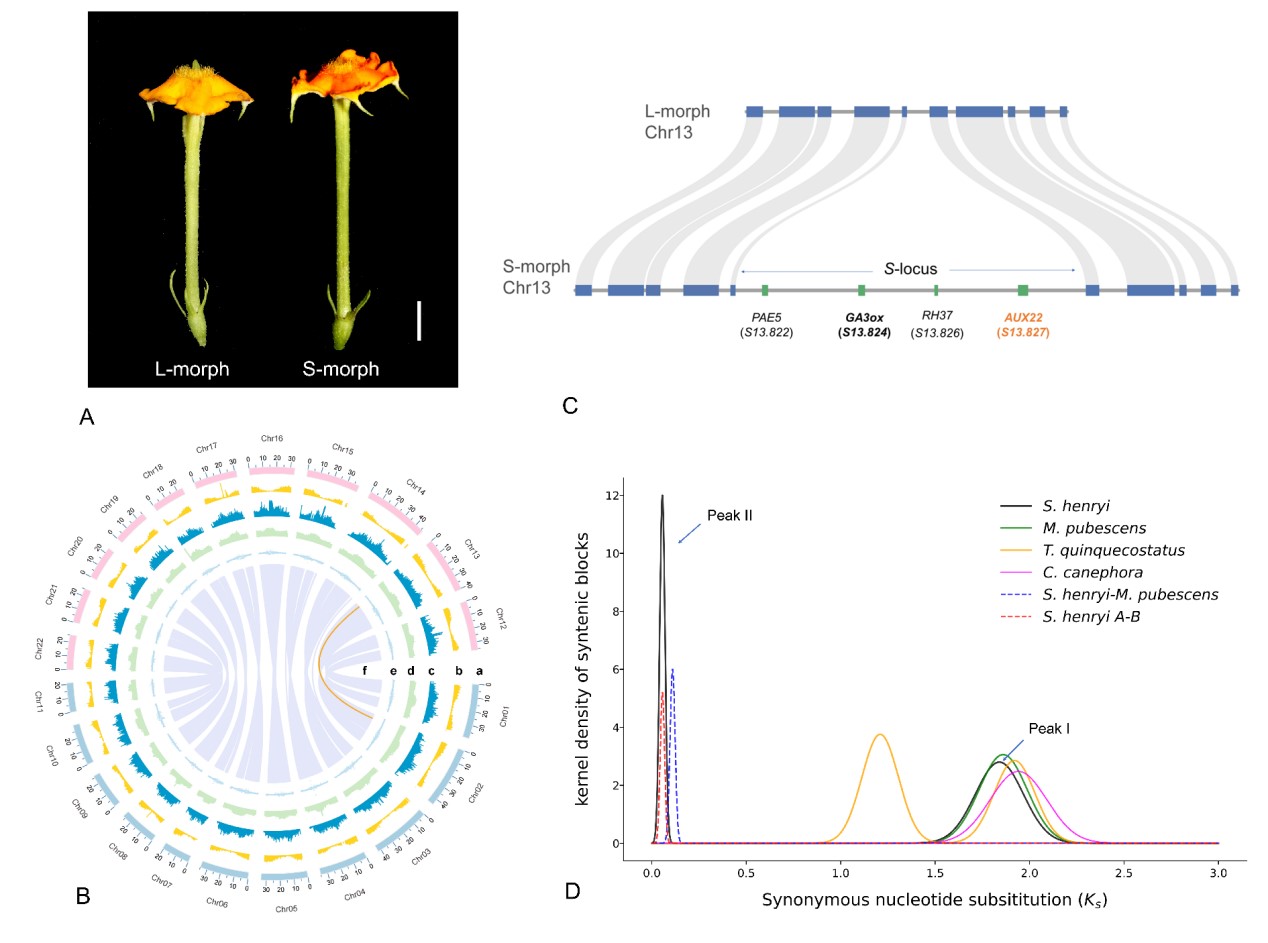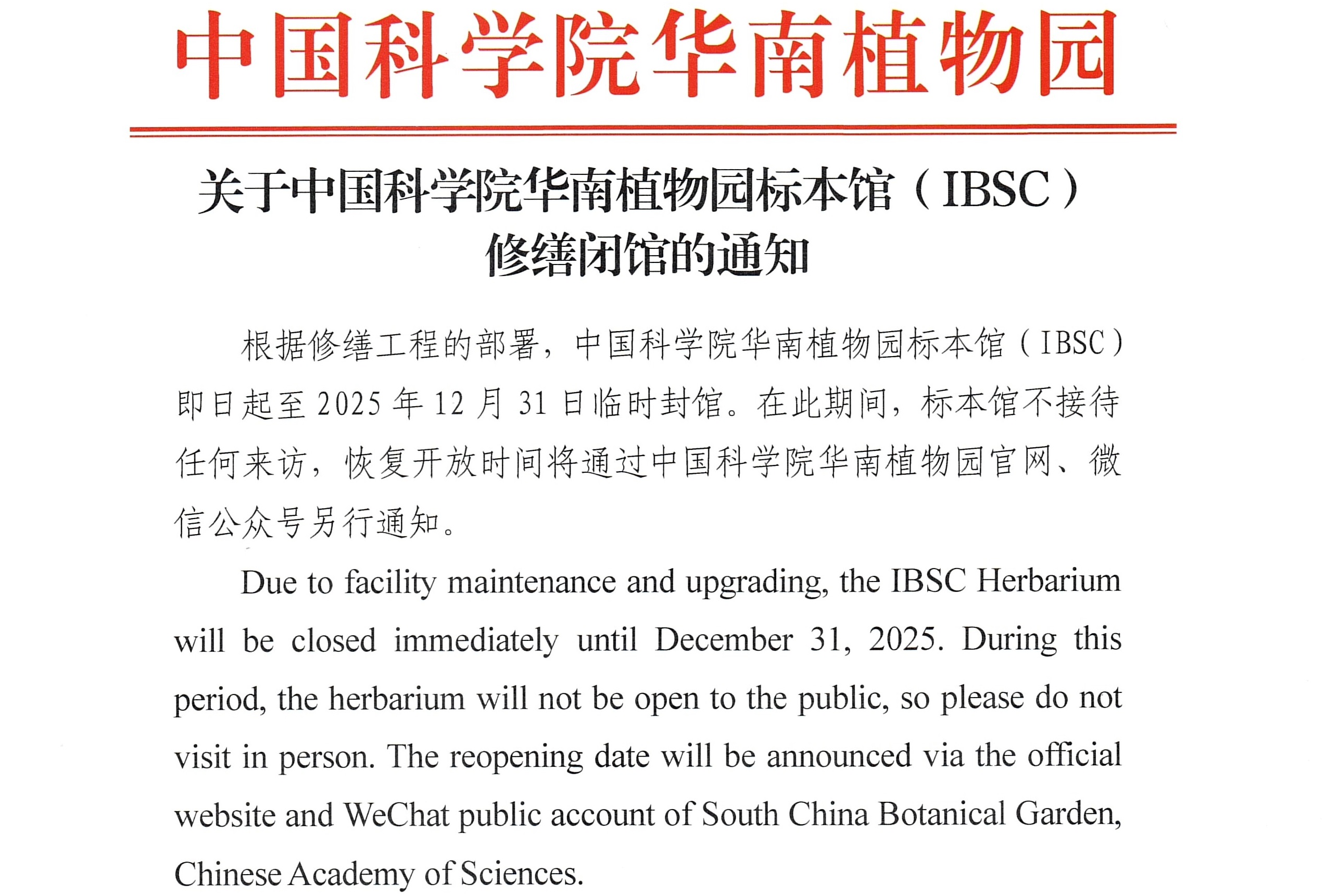News
-
2025-09-26Nuclear factor-Y transcription factors in crops: Biological roles, regulation, and breeding applicationsNF-Y transcription factors play a pivotal role in regulating growth, development, and stress responses in crops. This review comprehensively summarizes current understanding of crop NF-Y functions across diverse regulatory layers, establishing a theoretical basis for their application in molecular breeding, and further addressing the practical s... A research team from the Restoration Ecology Group of the South China Botanical Garden, Chinese Academy of Sciences reviewed the biological functions, regulatory mechanisms and breeding applications of NF-Y transcription factors in crops.This review provide a systematic summary of the current knowledge of NF-Y in crops across multiple regulatory...Read More
-
2025-09-26Greenspace exposure and its dual role as mediator and moderator in the relationship between urban density and mental healthUrban green space visitation and availability jointly buffer the mental health risks of high-density living. Community gardens and municipal parks provide the strongest and most consistent protective effects. Mental health has become a pressing global challenge, accounting for 32% of the global burden of life-threatening diseases. The COVID-19 pandemic further intensified this crisis, with a 25% increase in the prevalence of anxiety and depression worldwide. Urban residents are particularly vulnerable, facing risks associated with environmental pollu...Read More
-
2025-09-16Reveals divergent phosphorus adaptation strategies of tropical tree-mycorrhizal types after 12 years of simulated acid rainIntensifying acid rain is expected to exacerbate soil phosphorus (P) deficiency and reduce plant productivity in tropical forests. From the perspectives of both soil P acquisition and foliar P utilization, this study found the divergent strategies of tropical mycorrhizal trees to cope with acid-induced P deficiency. Acid rain is one of the most serious global environmental problems. Especially in southern China, persistent acid rain has led to severe soil acidification and the depletion of nutrients and base cations, thereby threatening ecosystem structure and function. Previous studies of Qi Deng's lab have shown that soil acidification after decades acid ...Read More
-
2025-09-16Tree-mycorrhizal types differ in their biomass response to nitrogen additionTree symbiotic associations with different mycorrhizal fungi (arbuscular mycorrhizal [AM] vs. ectomycorrhizal [ECM]) are a key predictor of woody biomass carbon (C) gain in response to nitrogen (N) addition.Therefore, shifts in the relative abundance of AM versus ECM trees could be a critical determinant of the future forest C sink under continu... A new study reveals that tree symbiotic associations with different mycorrhizal fungi (arbuscular mycorrhizal [AM] vs. ectomycorrhizal [ECM]) are a key predictor of woody biomass carbon (C) gain in response to nitrogen (N) addition. The study was published in Soil Biology and Biochemistry in 2025.From the South China Botanical Garden of the Chin...Read More
-
2025-09-14Roots dominate over extraradical hyphae in driving soil organic carbon accumulation during tropical forest successionPlant roots, rather than fungal hyphae, play the dominant role in soil carbon dynamics during tropical forest succession. In a two-year field experiment, we found that roots contributed nearly four times more to soil carbon accumulation by enhancing new carbon inputs and suppressing carbon losses from priming effects. A research team from the Restoration Ecology Group of the South China Botanical Garden, Chinese Academy of Sciences, in collaboration with scientists from the United States, Australia, and Spain, has made a breakthrough in understanding soil carbon sequestration in tropical forests. For the first time, the study systematically demonstrates that ...Read More
-
2025-09-14Polyploid Plants Maintain Heterostyly Through Ancient Genetic ArchitectureThrough genomic and transcriptomic analysis of the tetraploid distylous species Schizomussaenda henryi (Rubiaceae), this study identified an S-locus containing four hemizygous genes in the S-morph, with SchzAUX22 emerging as a key candidate regulating style length and filament growth via auxin signaling. The research demonstrates that the S-locu... Heterostyly is a floral polymorphism in which populations within a species contain two (distyly) or three (tristyly) floral morphs, characterized by reciprocal positioning of stigmas and anthers. This arrangement enhances pollination accuracy, reduces sexual interference, and promotes cross-pollination. Controlled by the S-locus supergene, heter...Read More
